There’s no denying that, in any situation, your most valuable tools are your hands. That’s why using the right gloves to protect them is crucial. However, the glove market is vast and varied, filled with an overwhelming array of options that can make it difficult to determine which gloves are truly the most suitable. In the following, we will provide a comprehensive guide on how to choose the right gloves for use in construction settings.
We’ll introduce the unique features and advantages of each type of glove so you can understand how to select the appropriate gloves based on the specific hazards and working conditions you may face.
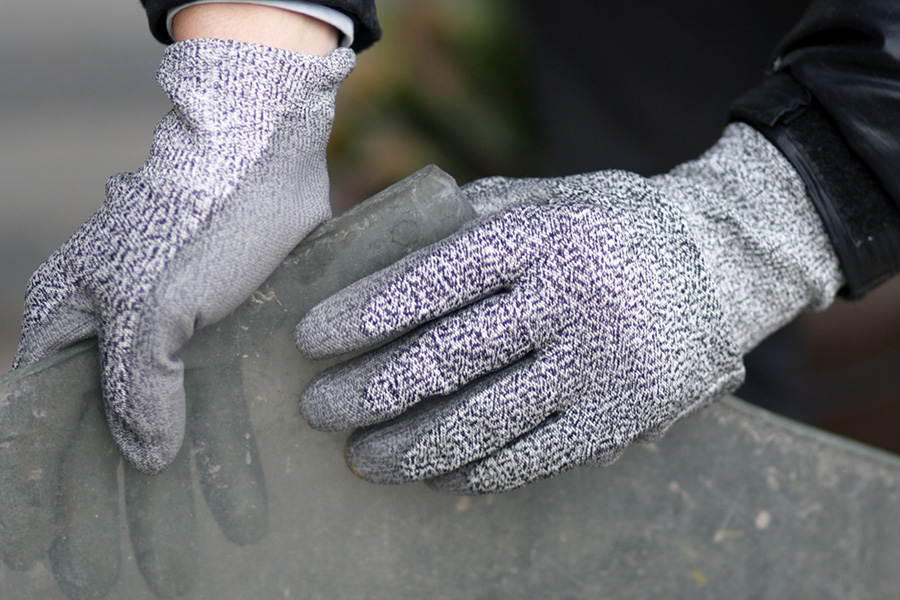
Cut-Resistant Gloves
Cut-resistant gloves are essential PPE designed to protect your hands when handling sharp and dangerous objects such as glass, metal, sharp-edged tools, or cutting machines. These gloves are commonly made from high-strength fibers like Kevlar, HPPE, or stainless steel wire.
Cut-resistance levels are rated based on the glove’s ability to withstand cutting forces, generally ranging from Level 1 to Level 5—where Level 1 offers the least protection and Level 5 offers the highest. These ratings help you identify which gloves meet the protection level required for your specific task. Below are some key factors to consider when selecting cut-resistant gloves:
Cut Resistance Level
First, determine the level of protection needed based on your work environment and potential risks. Lower cut-resistance levels may be adequate for handling insulation materials, while higher levels are necessary for working with metal sheets or glass.
_051.jpg)
Material Selection
Choose glove materials based on the nature of your work. For high-risk tasks like welding or cutting, Kevlar or high-strength composite gloves are more appropriate. For added grip and slip resistance, gloves with latex or nitrile coatings are ideal. Steel wire and woven textiles provide varying levels of cut protection and are suitable for handling sharp-edged construction materials or operating power saws.
Comfort and Flexibility
While protection is critical, comfort and proper fit are also important. Ergonomically designed gloves improve dexterity during delicate tasks and enable prolonged wear. Look for gloves with adjustable wrist closures or reinforcements in high-wear areas for comfort and durability during heavy-duty jobs like demolition or concrete drilling. Always ensure a proper fit to prevent accidents caused by loose or tight gloves.
Certifications and Standards
Check whether the gloves meet industry standards or certifications such as EN 388 or ISO 13997, which assess mechanical hazard protection. Certified gloves give assurance that they meet required cut-resistance performance and help avoid unnecessary risks.
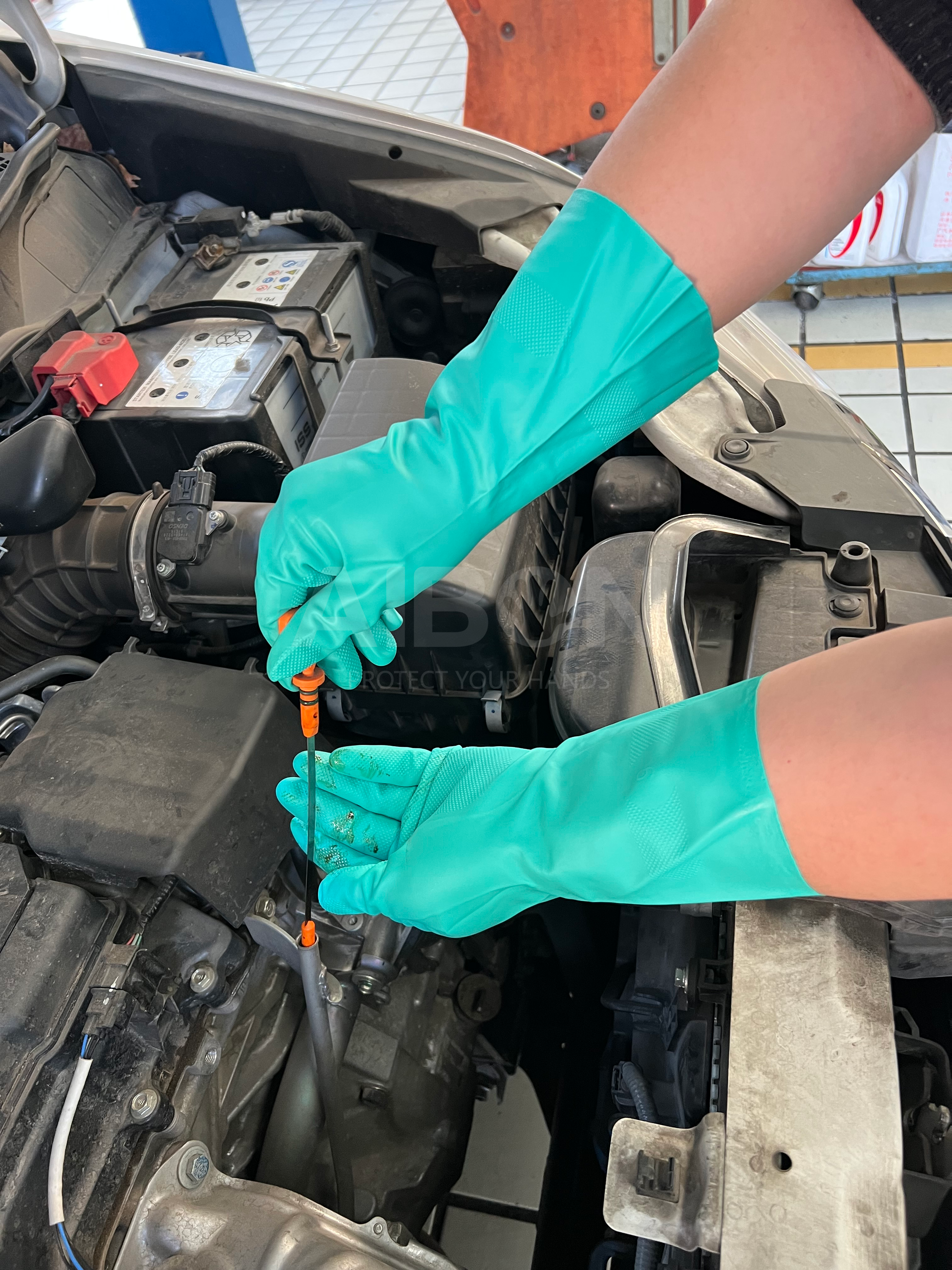
Chemical-Resistant Gloves
Chemical-resistant gloves are specifically designed to protect hands from hazardous chemicals such as strong acids and alkalis, solvents, chemical gases, and vapors.
EN 374 is one of the international standards from Europe related to gloves protecting against chemicals and microorganisms. This standard assesses a glove’s resistance to chemical penetration and degradation. Gloves are tested against various chemicals and classified based on their resistance, with corresponding certification symbols marked on the gloves.
_031.jpg)
Chemical-resistant gloves come in a variety of materials, including natural rubber, neoprene, nitrile, and PVC. Natural rubber gloves offer good resistance to water-based solutions and acids. Neoprene gloves provide better resistance to oils and chemicals. Nitrile gloves are ideal for handling irritating chemicals and solvents and comply with EN374 and EN388 standards. PVC gloves are suitable for handling strong acids and alkalis.
When selecting chemical-resistant gloves, consider the following factors:
Material Selection
Consider your working environment and the potential chemical hazards involved. The type of chemicals you will be exposed to, the duration of contact, and the severity of the hazard are all critical in choosing the right glove material.
Also, evaluate the glove’s permeability. Some chemicals can still penetrate through the glove. We recommend asking your supplier for samples or choosing gloves that have passed EN374 permeability tests for peace of mind and safety.
Glove Thickness
Thicker gloves generally provide better chemical protection but at the cost of reduced flexibility. They are more suitable for prolonged chemical exposure. Thinner gloves offer more dexterity but less protection.
Fit and Comfort
Make sure the gloves fit well to avoid them being too tight or too loose, which could compromise safety and work efficiency.
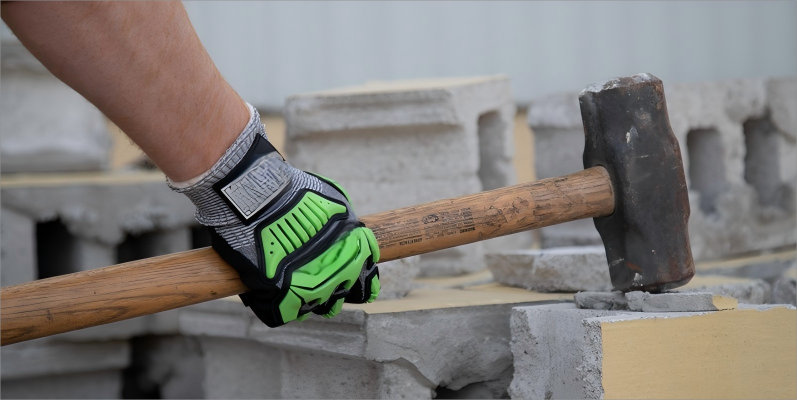
Impact-Resistant Gloves
Impact-resistant gloves are specially designed to reduce injuries caused by sudden shocks, vibrations, or impacts. They help disperse external force to minimize hand injuries.
These gloves are typically made from a combination of materials, including padded sections or knuckle protectors, and components like TPE, TPR, or even EVA for additional protection. They provide varying degrees of impact resistance based on the specific task.
When selecting impact-resistant gloves for construction workers, consider the following:
Material Selection
Choose the right material based on the working environment and hidden hazards. Different tasks require different features. For example, workers handling heavy materials or using hand tools may need gloves with reinforced palms and finger protection. For operating hammers or concrete breakers, gloves with vibration-dampening properties are more suitable.
Fit and Comfort
Once you’ve chosen the appropriate glove type, ensure the size and fit are correct. Ill-fitting gloves can impact safety and performance. A proper fit ensures comfort and reduces fatigue during long work hours.
Other Glove Considerations for Construction
In construction, workers face various challenges, and it’s essential to explore all glove options to ensure hand safety.
Here are several types of safety gloves tailored for construction workers:

Heat-Resistant Gloves: For those handling high-temperature materials, these gloves—made of leather, Kevlar, or aluminized fabrics—help prevent burns and other heat-related injuries.
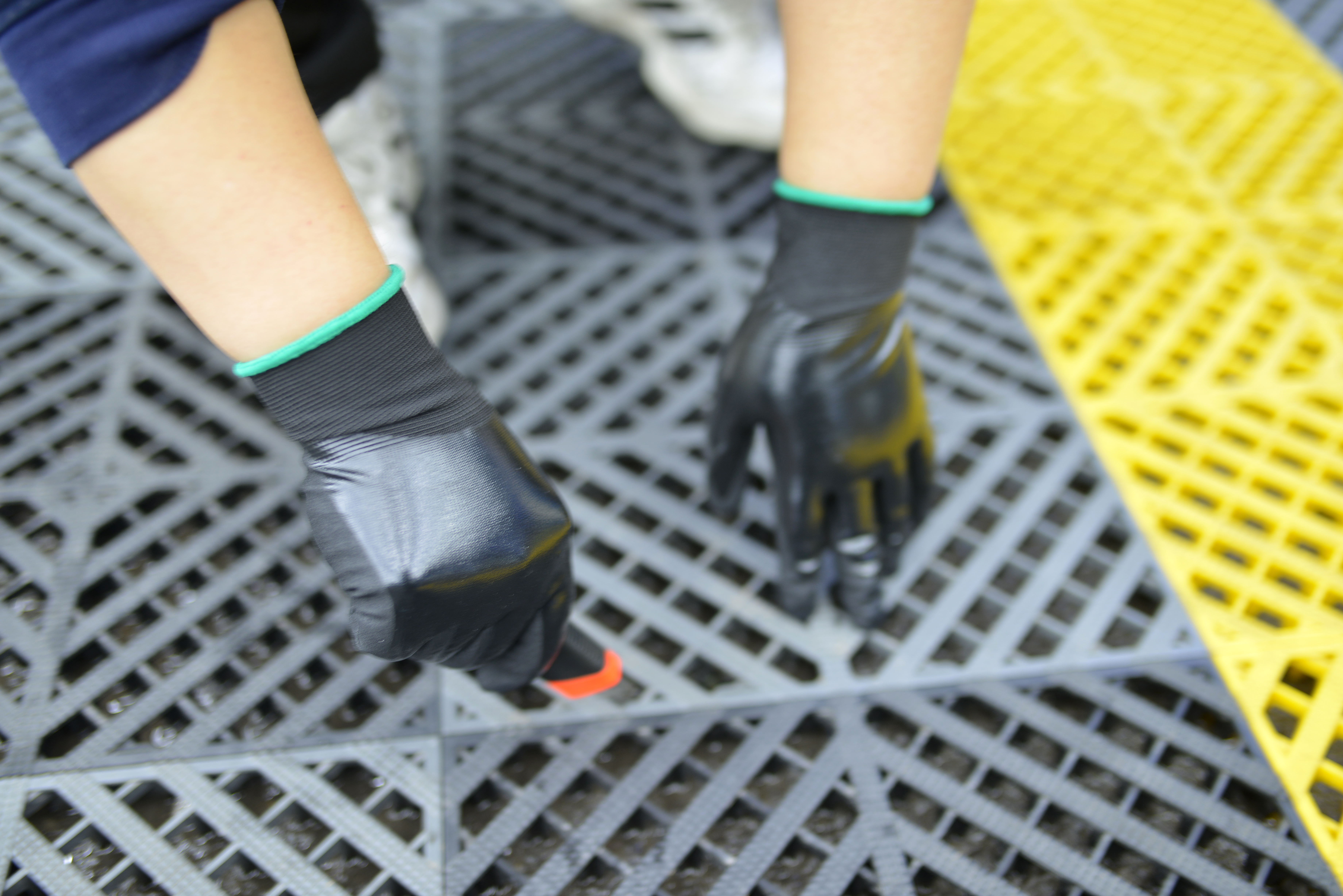
Nitrile Gloves: Extremely durable with excellent tear and puncture resistance. They are also chemically resistant and do not react with adhesives, solvents, or paints commonly found on construction sites—making them a top choice.
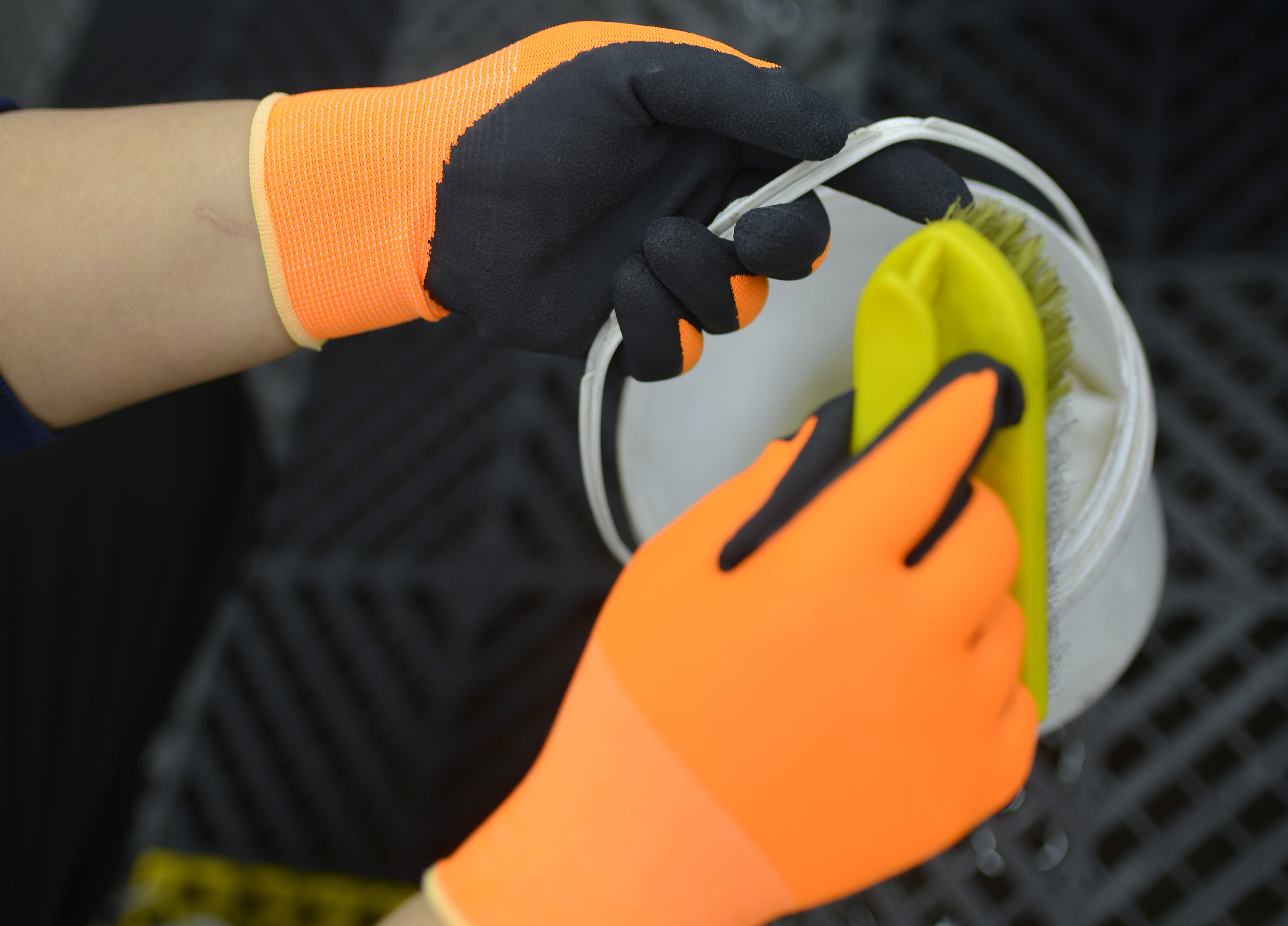
Latex Gloves: Offer a snug fit with excellent grip and elasticity. Textured or rough-surface latex gloves, especially those with a crinkle finish, provide great abrasion and tear resistance, often outperforming latex-coated options.
Conclusion
In summary, purchasing the right construction gloves is essential for ensuring your safety and comfort at work. Understanding different glove types—such as cut-resistant, chemical-resistant, and impact-resistant gloves—along with factors like material, thickness, and sizing, will help you make informed decisions and ensure the best fit and protection.
Visit our website, and you’ll find a wide range of trusted safety gloves tailored for construction workers. Let us help you make the best choice to support your safety and success on the job!
How to Measure Glove Sizes – Source: AIBON
Latex gloves– Source: AIBON
Safety gloves– Source: AIBON
Working gloves– Source: AIBON

